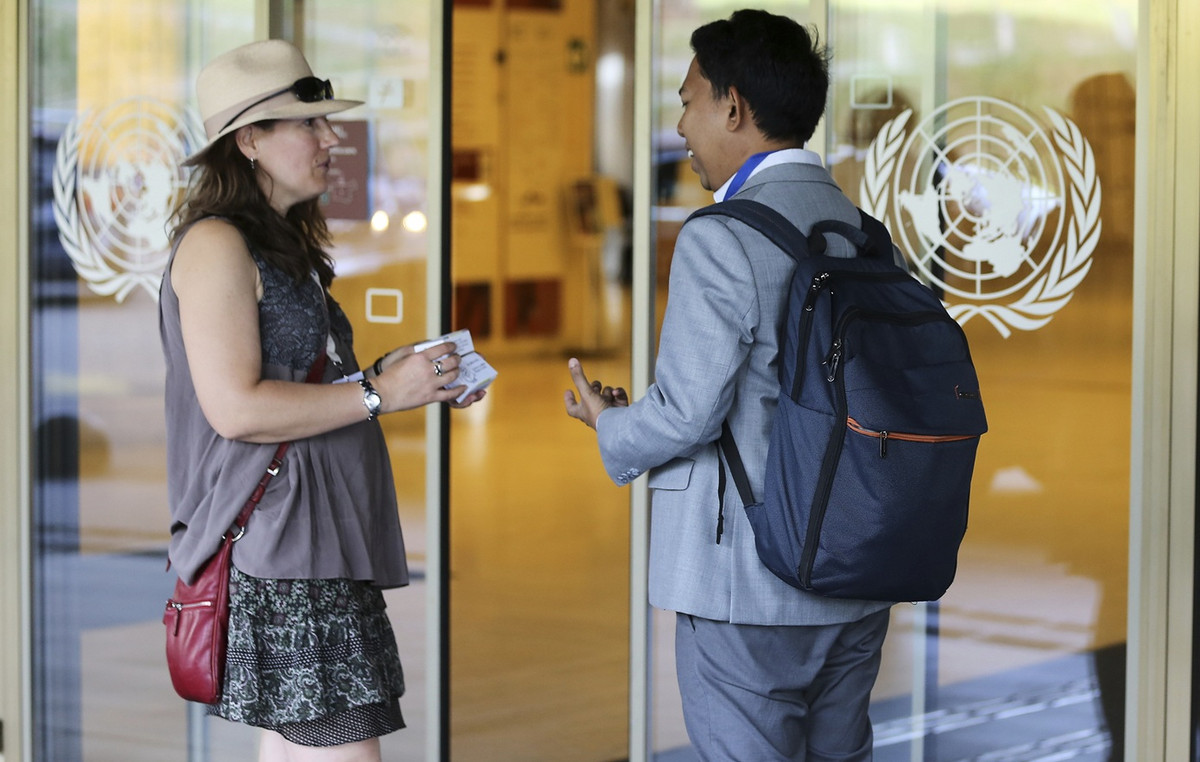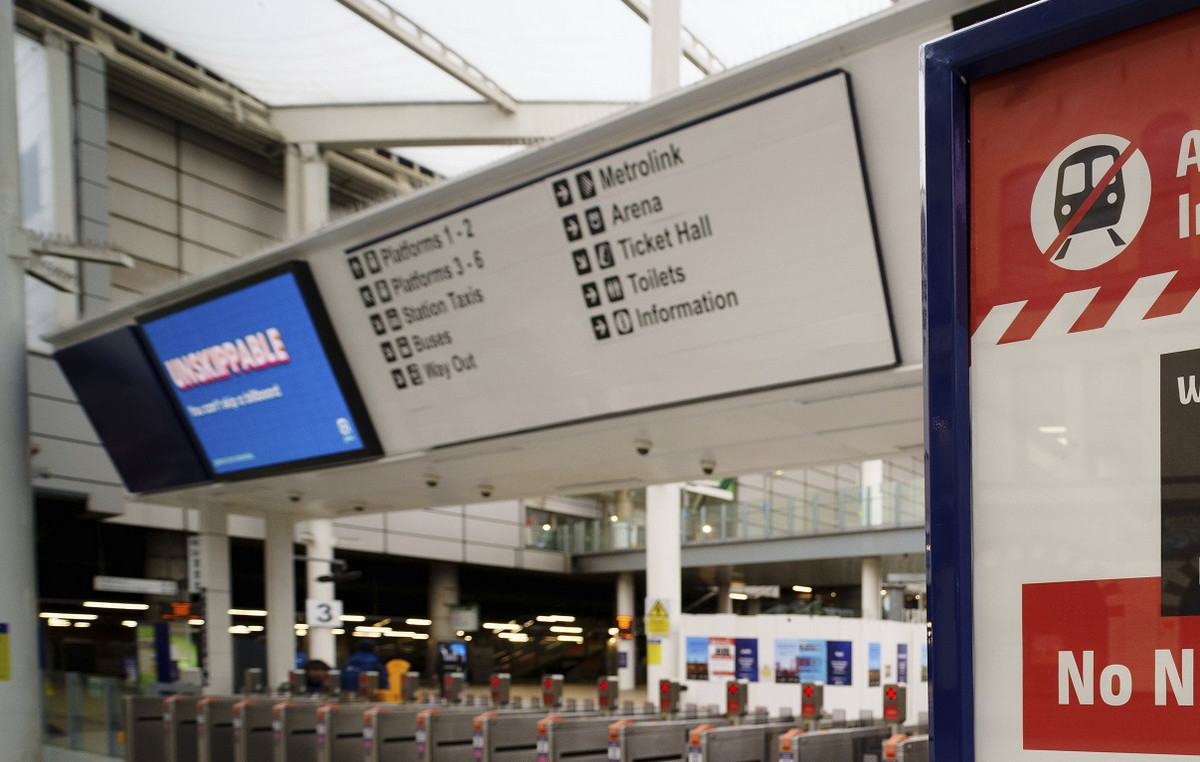The wide road that passes in front of Toussaint Louverture International Airport in Haiti has a post-apocalyptic stillness these days.
Where cars and crowds once gathered, only plumes of smoke rise from the smoldering piles of trash, spreading a bitter taste into the air.
An armored police vehicle is nearby; the few police officers on guard cover their faces with balaclavas.
This street appears almost abandoned, as if it were just after a disaster – an experience people in Port-au-Prince know better than most. But leaving the city is not an option this time; the airport, besieged by gangs, was forced to close.
Since the beginning of the month, criminal groups have attacked with unprecedented coordination the last vestiges of the Haitian state – the airport, the police stations, government buildings, the National Penitentiary.
The culmination of years of growing gang control and popular unrest, their joint attack forced Prime Minister Ariel Henry to resign last week, a stunning capitulation that nevertheless proved futile in restoring calm.
Port-au-Prince gangs are still blocking the supply of food, fuel and water throughout the city.
Perhaps the last functional part, the Haitian National Police, will continue to fight to try to recover ground, block by block throughout the city. But the very life of the city they fight for seems to be dwindling, as intense urban warfare destroys basic human bonds.
The social fabric is fraying as businesses and schools remain closed. Many residents isolate themselves, afraid to leave their homes. Some have resorted to vigilantism. Fear, distrust and anger reign. Death is on everyone's mind.

Vigilante justice, approved by the police
In Port-au-Prince's Canapé Vert neighborhood, the busy side streets are evidence of a once unthinkably harsh strategy for maintaining order.
The indelible mark of the extrajudicial killings – a thick, uneven layer of black soot on the sidewalk – is all that remains of hundreds of criminal suspects killed by residents, whose bodies were destroyed by flames, according to a local security source.
Gangs have long haunted Port-au-Prince residents, but their reach has expanded dramatically in recent years, now covering 80% of the city, according to UN estimates.
Watching their city shrink, many Haitians in this and other regions have organized themselves into a vigilante movement known as bwa kale.
The anti-gang movement saw communities form shared neighborhood defense committees, with fortifications, surveillance systems, checkpoints and even patrols.

Solidarity is effective; In 2023, for example, several hilly residential areas of the city joined forces with local police to repel the Ti Makak gang, driving them out of the area entirely, according to local sources and a February 2024 report from the Global Initiative Against Crime. Organized Transnationally, with headquarters in Switzerland.
But the line between defense and popular justice is easily crossed. Vigilante groups have also lynched hundreds of people suspected of gang membership or “common crimes,” according to an October 2023 United Nations report.

Speaking to CNN in a parking lot full of cars near a church, whose open doors revealed a wedding in progress, a militia member told CNN that his group had repelled repeated gang attempts to take Canapé Vert.
“This is how gangs operate: They occupy areas with big businesses and force them to pay them while they remain in control,” he said, noting that the area contains several high-profile companies, including two national cell phone companies and a big hotel.
He spoke to CNN on condition of anonymity out of concern for their safety.
“We constantly receive threats; they say they will come and attack us, they will destroy the neighborhood. So we block the streets and the police search; no civilians are involved in searching cars,” she added.
The militia is armed only with “machetes and our own hands,” he said.
However, the police told the CNN who knows the militia well and even trusts them, with one commander crediting the group with saving the Canapé Vert police station from a particularly intense gang attack last spring.
More than a dozen alleged gang members in that case were killed and burned outside the police station, according to the commander, who requested anonymity for his safety.
Refugees in their own city
Just a five-minute drive away, another community is desperately trying to stay together in even more difficult conditions: a displacement camp – one of dozens of sites spread across the city where thousands of city residents gather after being forced to abandon their homes. their homes by violence and arson.
Marie Maurice, 56, saw the gang gradually take territory; on February 29, when the warning came of an imminent gang attack, she wasted no time.
She left all her belongings behind and fled with the others for nearly an hour on foot to the Argentine Bellegarde public school for shelter, she said.

Nearly three weeks later, children here fly kites made from discarded aluminum foil and plastic, play with homemade toy cars cut from empty soda cans, with bottle caps for the wheels and rocks for the passengers.
Adults also demonstrate normality, but with a sense of futility; They elected a leader to liaise with local police and advocate for humanitarian organizations to bring food and water, for example, but in reality little help arrived due to roadblocks throughout the city.
Maurice tries to keep her family's corner of the crowded space clean, washing the floor with water that she has to walk 20 minutes to buy.
But no one in his family has enough to eat or even space to cook, living off a shared meal or a piece of street food every day.
Even a mint can count as a meal, she told CNN . The day we met her, she hadn't eaten anything.
In addition to the difficulty of daily survival, several camp residents say they know that the reception is worn out and that relations with neighbors are worsening.
There were clashes with local residents eager to get them out, fearing that the influx of outsiders would attract the attention of the gangs.
Anticipating the effects of dwindling resources and worsening violence, the International Organization for Migration has repeatedly warned of a worsening “climate of mistrust” in Haiti that would erode traditional social safety nets, leaving people with nowhere to go. .

“High levels of insecurity are creating a climate of mistrust between certain host communities and displaced populations, thereby deteriorating social cohesion,” the organization said in an August 2023 report, which also noted that more and more displaced Haitians are ending up in these camps rather than relying on friends and family.
The small school where Maurice lives has already exceeded capacity. But every day, more people from other parts of the city join them, putting even more strain on the few resources the place offers – the building's septic tank is full and the toilets are blocked, a resident told reporters. CNN . Your water cistern is almost dry.
Today, 1,575 people live crammed into open-air classrooms – just a handful compared to the more than 360,000 who have been displaced across the country, according to the International Organization for Migration (IOM).
Divided by fear
Port-au-Prince has been terrorized for years by frequent kidnappings, torture and gang rapes. But today, as Haiti's elite haggle over the composition of a transitional presidential council – and the international community remains reluctant to intervene – talk of a political solution sounds more than ever like wishful thinking as gunshots ring out in the night, piercing the silence. of the city.
Meanwhile, the proliferation of police, gang and civilian checkpoints is fragmenting Haiti's capital into wary and anxious fiefdoms. Increasingly, the one thing they all share is trauma.

Marie-Suze Saint Charles, 47, says her own children are too terrified by the constant violence to even visit her in the hospital, where she is recovering from a March 1 shooting that broke her leg after being attacked when he returned from work.
A 17-year-old son was also shot and is in another hospital. The other children – eight and thirteen years old – refuse to leave home. She's not sure who, if anyone, is feeding them.
“They are afraid of the streets,” she told CNN in your hospital bed. “They don’t even want to come see me. They are too scared to go out.”
Source: CNN Brasil
Bruce Belcher is a seasoned author with over 5 years of experience in world news. He writes for online news websites and provides in-depth analysis on the world stock market. Bruce is known for his insightful perspectives and commitment to keeping the public informed.







